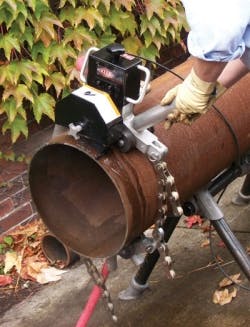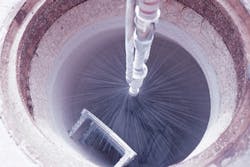Prior to Dr Barnard's development of BNR technology, used water reclamation plants commonly used chemicals to remove nitrogen and phosphorus. Left to accumulate, nitrogen and phosphorus can lead to excessive algae growth, which adversely affects the ecology in water bodies and contributes to poor water quality in rivers and lakes. Dr Barnard's led the sustainable alternative to conventional chemical processes, which make it possible to return treated used water to rivers and lakes with minimal detrimental impact on the environment.
Dr Barnard's discovery of BNR
By the mid-20th century, used water treatment plants were successful in removing organic pollutants, ammonia, suspended solids and pathogens using the biological method. However, nutrients such as nitrogen and phosphorus could only be removed with use of chemicals. After completing his doctorate work in Water Resources and Environmental Health Engineering at Vanderbilt University in the United States, Dr Barnard returned to his native South Africa, where water shortages and poor water quality as a result of algae blooms were already serious problems. Conventional chemical treatment methods for used water were costly and generated large amounts of sludge that has to be disposed. As senior chief research officer at the National Institute for Water Research in Pretoria, Dr Barnard began to consider ways in which micro-organisms – biology – could be used to remove nitrogen and phosphorus.
By 1972, he had achieved a four-stage process that removed nitrogen from water at a rate of more than 92%, without the addition of chemicals. Within just three months of this achievement, Dr Barnard had convinced the city of Johannesburg to use his design for the new Goudkoppies Nitrogen Removal Plant. Two years later, by 1974 Barnard had developed the foundation for Enhanced Biological Phosphorus Removal (EBPR).
More research followed - through small-scale experiments and full-scale plant studies – until eventually, Dr Barnard achieved simultaneous nitrogen and phosphorus removal through the creation of the process that came to be known as Biological Nutrient Removal. Over the last 40 years, he has adapted his BNR technology to suit different climates, environmental limitations and water infrastructure around the world. This has led to the widespread implementation of BNR-based processes in thousands of water treatment plants around the world such as in the US, Europe, Canada, Australia and New Zealand. In recent years, the technology has also been adopted in developing countries such as China and Brazil. BNR is widely regarded as one of the most important innovations in used water treatment of recent times.
The future of BNR
In the quest for smaller footprint plants with improved efficiency, Dr. Barnard believes that membrane assisted BNR plants [MBNR] will benefit from the extensive research in improving membrane characteristics. The same biology could be used with membranes acting as a superior solids/liquid separation.
BNR also helps reverse the dwindling supply of phosphorus - something that Dr Barnard is passionate about. Referring to phosphorus as "the battery of life", he shares the concern that the limited deposits of phosphorus rock in the world would drive prices of phosphorus fertilizer up. Even at current prices, half of the world's population cannot afford it. Some estimate that the supply of high grade phosphorus will be exhausted in 50 years.
A welcome by-product of the BNR process is the collection of phosphorous. Phosphorus and magnesium absorbed in the biological process is released to a concentrated form solution, from which it is possible to recover struvite, an excellent slow-release fertilizer. WWi
Author's note:Dr Barnard will receive the Lee Kuan Yew Water Prize during the Singapore International Water Week 2011 and will also deliver the Singapore Water Lecture 2011 on 5 July 2011 to some 1,500 delegates.
More Water & WasteWater International Current Issue Articles
More Water & WasteWater International Archives Issue Articles




